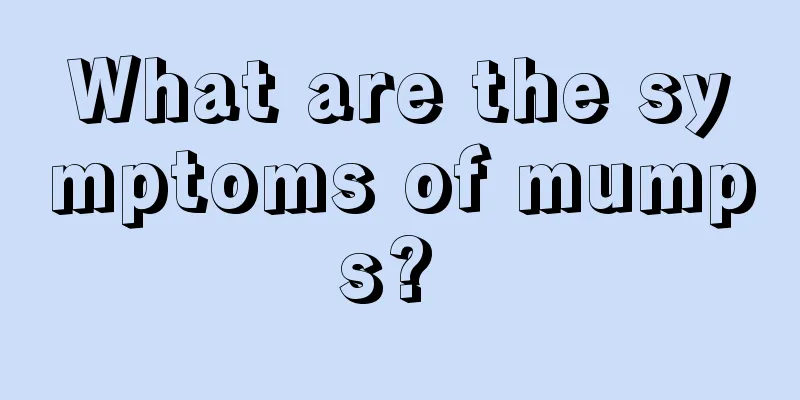Differentiation between benign and malignant ovarian cysts

|
There are many ovarian cysts in life. Patients are all malignant tumors. Malignant tumors are more serious. Not only do they need to be removed, but in serious cases, ovarian removal is also required to prevent the disease from worsening. At this time, women's reproductive function has been seriously affected. So what are the differences between benign and malignant ovarian cysts? The examinations for ovarian cysts mainly include radiology, ultrasound, and laparoscopy. From the examination we can know whether the ovarian cyst is benign or malignant. Here is a detailed introduction for everyone: 1. Radiological examination Radiological examinations mainly include four diagnostic items: abdominal plain film, intravenous pyelography, barium swallow radiography and lymph node examination, which can preliminarily distinguish between benign and malignant cysts, and determine whether the cysts have metastasized to the liver, lungs or retroperitoneal lymph nodes. They can fully predict the development of the disease and provide a strong basis for subsequent treatment. 2. Ultrasound examination Ultrasound examination is a relatively simple and effective diagnostic method. If the cyst is benign, unilateral cystic tissue can be clearly seen under ultrasound. If the cyst is malignant, the boundaries of the local lesions are generally unclear under ultrasound, and there are often septa, accompanied by ascites. In addition, ultrasound examination can also detect the location, size, shape and nature of the mass, which can not only indicate the cystic or solid nature of the tumor, but also distinguish the benign or malignant nature of the cyst, laying a good foundation for subsequent treatment plans and is an important reference indicator. 3. Laparoscopy Laparoscopic examination can directly see the general condition of the tumor, and can clearly observe the entire pelvic and abdominal cavity, perform multiple biopsies at suspicious sites, and absorb peritoneal fluid for cytological testing to clearly diagnose whether the cyst is benign or malignant, which can provide certain guidance for subsequent treatment. There are many drugs for the treatment of ovarian cysts. Here are some of the more effective drugs: Guizhi Fuling Capsule: promotes blood circulation, removes blood stasis, and relieves symptoms. It is used for women with lumps caused by blood stasis blocking the collaterals, amenorrhea, dysmenorrhea, and postpartum lochia; uterine fibroids, chronic pelvic inflammatory disease, dysmenorrhea, endometriosis, and ovarian cysts. Hongjin Xiaojie Capsule: Soothes the liver and regulates qi, softens and disperses nodules, promotes blood circulation and removes blood stasis, reduces swelling and relieves pain. It is used for lobular hyperplasia of the breast, uterine fibroids, and ovarian cysts caused by qi stagnation and blood stasis. The examination of ovarian cysts is relatively simple and convenient. Through examination, you can clearly know whether the disease you have is benign or malignant, which is very helpful for treatment. |
<<: What are the basic moves for boys to get started in street dance
>>: What is the cause of ovarian pain
Recommend
Is acupuncture effective for rhinitis
In fact, rhinitis is very difficult and complicat...
Six signs from the body indicate that you are lacking nutrition
Everything in the world adheres to the principle ...
What is the reason why men have yellow hair
A man's hair affects his image. A head of bla...
Does a hair removal device really remove hair permanently?
Hair removal is very popular in modern life. It c...
How to treat hip effusion?
Recently, I often see some young people doing a s...
What are the late symptoms of gallbladder cancer?
In recent years, gallbladder cancer has become on...
What should I do if I can’t fall asleep at night
Many people who set up stalls find it difficult t...
Does betel nut refresh you?
I believe that many people often take a piece of ...
When is the best time to eat apples
In daily life, in addition to supplementing some ...
Routine perioperative nursing care for pancreatic cancer
Pancreatic cancer is a common cancer in life. It ...
What are the symptoms of vitamin C deficiency
There are many types of vitamins, common vitamins...
Are there small particles on the glans?
If small granular substances appear on the glans ...
Check out the 10 things that can damage your eyes the most
Eyes are the windows to the soul. It is a blessin...
Is it a disease if the elbows are black? What is the reason for the black elbows? Why are the elbows black?
Black elbows are very common. Most of the time, b...
How can I speed up the opening if I open it one finger?
When a pregnant woman is approaching her due date...









